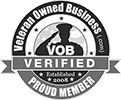Ever wish your parents had kick-started your financial journey early? Well, it’s not too late to be the hero in your child’s story. Whether you’re a parent, grandparent, or cool aunt/uncle, there are powerful ways to build generational wealth—and it doesn’t require winning the lottery.
Why a Savings Account Isn’t Enough
Let’s be real: parking money in a traditional savings account won’t even beat inflation, let alone build wealth. If you want your child or grandchild to grow up financially secure—or even become a millionaire—it’s time to think smarter.
Step 1: Open a Custodial Roth IRA
Best for: Kids with earned income
The Custodial Roth IRA is the MVP of long-term wealth-building tools. Unlike EE savings bonds (a low-risk bond offered by the U.S. Department of the Treasury), Roth IRAs keep your money tax-free and teach kids the value of saving and investing.
Key Benefits:
• Tax-free earnings
• Withdrawals for college or a first home (up to $10,000) are penalty-free
• Teaches financial responsibility
💡 Pro Tip: Your child can earn money babysitting, mowing lawns, or even working for your family business. Just keep records and match their earnings with contributions to the Roth IRA (max $6,000 per year).
The Power of Compound Interest
If your child starts saving just $200/month at age 10 and earns a 7% return, they could have over $1,000,000 by age 60. That’s the power of early investing.
Step 2: Use a UGMA Account if They Don’t Work
A Uniform Gifts to Minors Act Account is an after-tax investment account that you control until the child becomes an adult, which is 18 years old in most states. Unlike a Roth IRA, this doesn’t require earned income, making it perfect for younger kids.
UGMA Perks:
• Anyone can contribute (hello, generous grandparents)
• Funds can be used for anything—not just retirement or education
• Builds investment knowledge early
Step 3: Supercharge Education Savings with a 529 Plan
A 529 college savings plan is a tax-advantaged way to save for future education costs. Hypothetical potential earnings will be tax-free, and many states offer tax deductions for your contributions.
529 Plan Highlights:
• Use funds for college tuition, books, and even K-12 expenses
• Tax-free withdrawals for qualified expenses
• Option to “superfund” up to $75,000 in one year (no, that’s not a typo)
Step 4: Teach Kids Financial Literacy—Because Schools Won’t
Let’s face it—most schools don’t teach personal finance. That’s where you come in. Use everyday moments to introduce smart money habits:
At the grocery store: Talk about budgeting and price comparisons
Use grocery shopping as a hands-on lesson in budgeting. Show your child how to plan a grocery list within a set spending limit, then compare prices between brands or sizes to find the best deals. This helps them understand the value of money and how to make smart financial decisions in everyday situations.
With allowances: Teach saving vs. spending
When giving an allowance, break it down into categories like saving, spending, and even donating. Help your child set savings goals (like a new toy or game) and show them the satisfaction of working toward something over time. This encourages delayed gratification and responsible money habits.
At restaurants: Let them calculate tips to learn percentages
Dining out is a great opportunity to introduce percentages through tip calculation. Ask your child to figure out a 15–20% tip based on the bill total. This not only reinforces basic math skills but also teaches real-world applications of percentages and the value of service.
Millionaire Kids Aren’t Born—They’re Taught
Becoming a millionaire isn’t magic. It’s math + time + discipline. The earlier your child starts saving and investing, the more time compound interest has to work its magic.
Let’s do the math – which one of these hypothetical options sounds more realistic and appealing?
Saving $200/month for 50 years at 7% annual return (compounded monthly) will result in $1,089,614
Waiting to save $1,000/month for 20 years at 7% annual return (compounded monthly) will result in $520,927
To put it simply, the biggest financial advantage kids have is time. Start now, stay consistent, and your child could be well on their way to a seven-figure future.
Financial examples provided are hypothetical. Please consult a financial advisor for questions about your personal financial situation. All investments involve risk, including the potential for loss.


